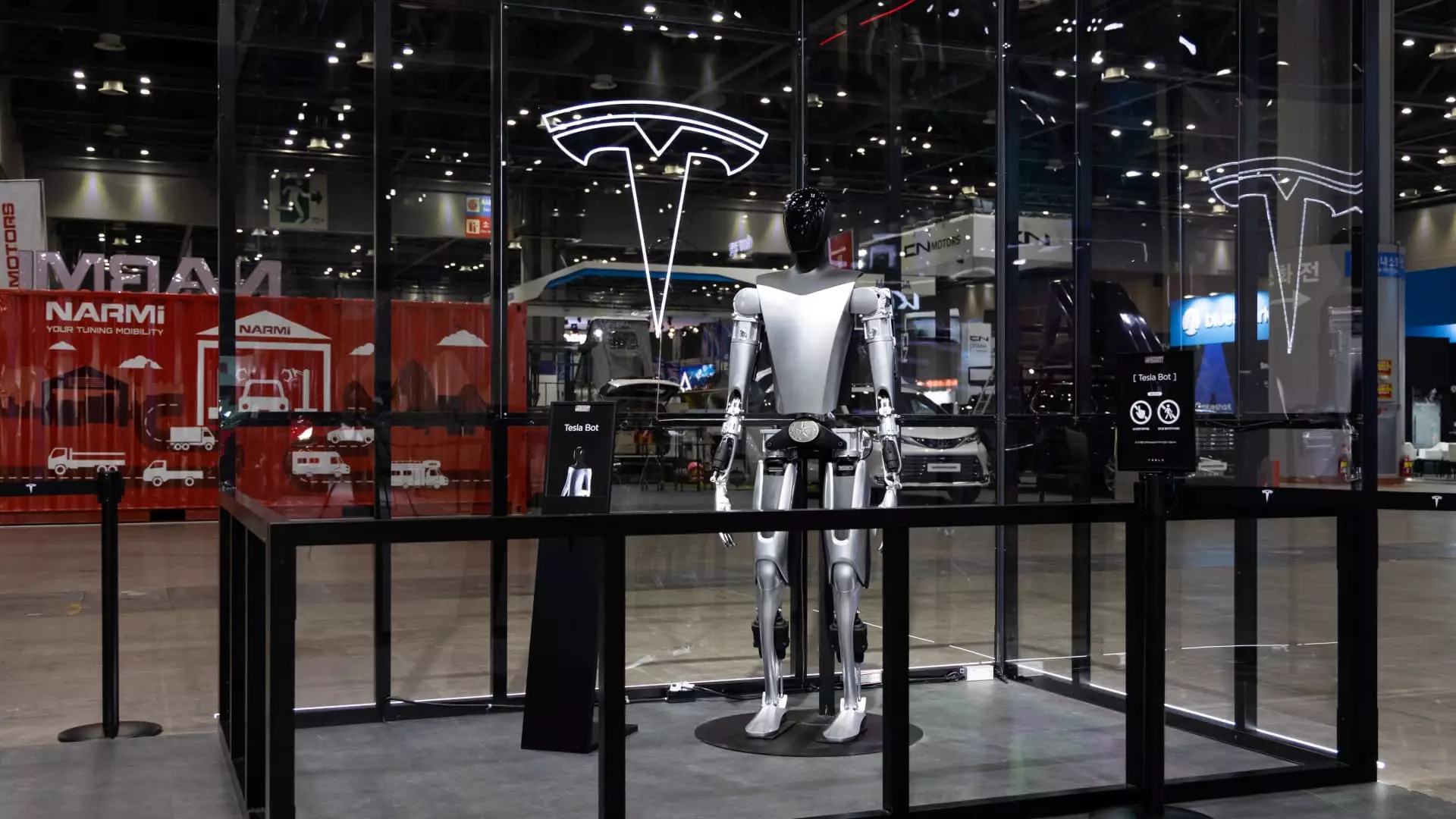In the rapidly evolving landscape of technology, a new frontline has emerged not in Silicon Valley, but rather through the intricate web of international trade. Recently, Elon Musk, CEO of Tesla, has painted a picture of how China’s restrictive trade policies are jeopardizing the expansion of his ambitious humanoid robot project, Optimus. The trade restrictions on rare earth elements, essential components in modern tech, have sparked considerable concern, revealing vulnerabilities that extend beyond mere supply chains. This reality exemplifies just how intertwined our global economic and political systems have become, with implications that extend to the very heart of technological advancement.
The newly instated export controls from China underscore a critical juncture where geopolitics meets innovation. Musk’s urgency during a recent earnings call was palpable; he acknowledged the necessity of securing approvals from Beijing to access rare earth elements, stressing that these components inevitably play into the future of Tesla’s operations—not as a vehicle of warfare, but as a conduit for unprecedented automation. Let’s dissect this further: how does one navigate innovation while dancing on the tightrope of geopolitical tensions?
The Stakes of Dependence
One cannot overlook the overwhelming reliance on Chinese exports for rare earth materials. Musk’s plea for assurances highlights an intricate balance where economic realities clash with national security. Many in the center-right liberal specter might argue that fostering dependency on an external supplier, especially one with a history of antagonism towards the West, can be detrimental. The U.S. must urgently ramp up its domestic production capabilities. A failure to do so poses a twofold risk: we lose ground in sectors vital to national defense, and we undermine our position in the global economy.
Notably, Musk characterized the robots as inherently non-military, which might sound like an innocuous assertion. However, the Chinese government’s demand for guarantees raises troubling questions about the scope of innovation versus the pervasive influence of state strategy. Musk’s robots may seem benign, yet the undercurrents of mistrust and scrutiny underline a more significant issue: can U.S. firms truly innovate in a landscape where components critical to their success are under foreign control?
Competition from the East: The New Face of Robotics
As Musk eyes the future, he faces an intimidating landscape—a burgeoning cohort of Chinese robotic companies such as Unitree Robotics and AgiBot, both of which are poised to capitalize on these export controls. The U.S. tech industry is at a dangerous crossroads; our seemingly insatiable appetite for innovation found within a globalized economy might soon be overshadowed by competitors rapid to exploit this ideological rift. The competition is not simply a matter of market share; it is a race against time and resilience.
Musk’s optimistic outlook on his humanoid projects raises a fundamental question: can optimism alone drive progress? When the partnership of technological advancement and geopolitical stability is in a constant state of flux, what does this imply for the future of U.S. companies? This omnipresent backdrop of global rivalry suggests that being “ahead of the competition” is a moving target, one that demands consistent vigilance and adaptability.
Navigating the Landscape of Investor Sentiment
The introduction of rare earth trade restrictions has not only triggered logistical dilemmas for Tesla but also a crisis in investor confidence. With Tesla’s stock nearing a staggering decline of 37% year-to-date, the scrutiny from investors will intensify. Historical trends suggest that markets react strongly to geopolitical tensions, with anxiety bubbling at the surface. Future growth hinges upon the confidence that Musk can instill in investors, many of whom may view his robotic ambition as a gamble against formidable odds.
As competition ramps up, the narrative must shift from innovation for the sake of profit to strategic foresight that anticipates both market shifts and broader socio-political occurrences. Thus, the message is clear: companies must buffer their ambitions for growth with robust risk management strategies in the face of geopolitical uncertainties. Whether it’s through diversification of supply chains or fostering domestic production, Tesla and its contemporaries stand at the crossroads of potential greatness or significant decline.
The Uncertain Future of Robotics
With technological monsters like humanoid robots reliant on critical materials caught in the geopolitical crossfire, the stakes couldn’t be higher. Musk’s ambitions for Optimus could signify a turning point for Tesla, but only if it can deftly navigate the complexities of the world stage. The narrative is no longer just about who can build faster or smarter; it also questions who can build sustainably within an increasingly contentious landscape.
Musk has placed a bold bet on automated robots to reshape markets and bolster Tesla’s image. However, amidst the backdrop of international sanctions and trade wars, the question lingers: will that daring vision convert into reality, or will geopolitical maneuvering smother yet another great American dream? As we monitor the development of Tesla and its competitors, the world watches—waiting to see if innovation can thrive in an era that is as fraught with challenges as it is laced with potential.

